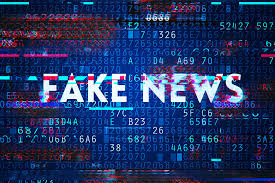
In today’s digital world, information spreads at lightning speed. But not all of it is true. From misleading headlines to completely fabricated stories, fake news has become a global problem—impacting elections, public health, and even social trust. With billions of people relying on the internet for news, the challenge of separating fact from fiction has never been greater. That’s where artificial intelligence (AI) is stepping in.
1. Why Fake News Is So Dangerous
Fake news isn’t just about harmless rumors. It can:
- Influence Politics: Misleading articles can sway voter decisions.
- Harm Public Health: False medical advice spreads faster than science-backed information.
- Fuel Division: Fake stories are often designed to provoke anger, fear, or distrust.
- Damage Reputations: Individuals and businesses can suffer from false claims that go viral.
The sheer scale of online content makes it nearly impossible for humans alone to police fake news.
2. How AI Detects Fake News
AI tools are designed to analyze massive amounts of content in seconds. Here’s how they help:
- Language Analysis: AI can detect patterns in writing style that often appear in fake stories, such as emotional exaggeration or clickbait phrasing.
- Source Verification: Machine learning models can cross-check whether a claim matches trusted databases and reputable sources.
- Image & Video Forensics: AI can identify manipulated photos, deepfakes, or videos taken out of context.
- Behavior Tracking: Algorithms flag suspicious posting patterns, such as bots spreading the same story across multiple platforms.
3. The Benefits of AI in News Verification
- Speed: AI can scan thousands of posts instantly, much faster than human fact-checkers.
- Scalability: It can monitor global news in multiple languages at once.
- Consistency: AI applies the same rules every time, avoiding personal bias.
- Support for Journalists: Instead of replacing journalists, AI provides tools to help them fact-check faster and more effectively.
4. Challenges and Risks of AI Fact-Checking
While AI is powerful, it’s not perfect:
- Bias in Algorithms: If trained on biased data, AI can misclassify real news as fake or vice versa.
- Censorship Concerns: Over-reliance on AI could silence legitimate but unpopular viewpoints.
- Adaptation by Misinformation Creators: Fake news producers evolve, creating content designed to trick AI detection systems.
- Trust Issues: Some people may resist AI-driven fact-checking, believing it to be a form of control.
5. The Future of Fighting Fake News
The battle against fake news will likely be a team effort:
- AI will handle the heavy lifting of scanning and flagging suspicious content.
- Human experts—journalists, fact-checkers, and academics—will review and verify flagged stories.
- Governments, tech companies, and users will need to collaborate to ensure information remains free but credible.
Final Thoughts
AI isn’t a silver bullet, but it’s becoming a critical weapon in the fight against fake news. By combining the speed of machines with the judgment of humans, society can begin to reclaim the internet as a place for truth rather than manipulation.